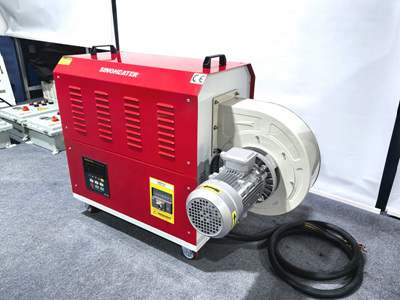After the hot air blower is used in an electromagnetic interference environment, a comprehensive performance test is required to ensure its electromagnetic compatibility and safety. The following are the specific test contents and analysis:
First, electromagnetic compatibility testing
Radiation emission test
Objective: To measure the level of electromagnetic interference transmitted through the air when the hot air blower is in operation, and ensure that the radiation level within the specified frequency band does not exceed the relevant standard limits.
Method: It is carried out in an anechoic chamber, using equipment such as a spectrum analyzer and antennas to measure the radiation emission of the hot air blower under different working conditions.
Conducted emission test
Objective: To measure the electromagnetic interference transmitted through power lines or other connecting lines when the hot air blower is in operation, ensuring that it does not cause interference to other connected devices.
Method: It is carried out in a shielded room, using equipment such as a spectrum analyzer and current probes to monitor the conducted emissions on the power line.
Immunity test
Objective: To evaluate the working performance of the hot air blower when exposed to external electromagnetic interference, including whether it can normally receive and process signals, and whether there will be misoperation or malfunction.
Method:
Radiation immunity test: Use a signal generator and antenna to simulate external electromagnetic radiation interference and observe the operating status of the hot air blower.
Conducted immunity test: Inject analog interference signals through the power line to check the anti-interference ability of the hot air blower.
Second, electrical safety inspection
Insulation resistance test
Objective: To ensure the good electrical insulation performance of the hot air blower and prevent the risk of electric leakage.
Method: Use a megohmmeter to measure the insulation resistance between each live part of the hot air blower and the casing.
Withstand voltage test
Objective: To verify the insulation strength of the hot air blower under high pressure, ensuring that insulation breakdown does not occur in the event of voltage fluctuations or lightning strikes, etc.
Method: Use a withstand voltage tester to apply a test voltage higher than the rated voltage to the hot air blower for a certain period of time, and observe whether breakdown or flashover occurs.
Grounding continuity test
Objective: To ensure the reliability of the grounding system of the hot air blower and prevent electric shock accidents.
Method: Use a ground resistance tester to measure the resistance between the grounding terminal and the grounding electrode of the hot air blower.
Third, functional and performance testing
Start and run the test
Objective: To check whether the hot air blower starts and operates normally after being used in an electromagnetic interference environment.
Method: Under the simulated electromagnetic interference environment, the hot air blower was started and stopped multiple times to observe its response time and operational stability.
Temperature and pressure testing
Objective: To ensure that the outlet air temperature and internal pressure of the hot air blower are within a safe range.
Method: Use a thermometer and a pressure gauge to measure the temperature at the outlet of the hot air blower and the internal pressure.
Efficiency detection
Objective: To evaluate the energy consumption efficiency of the hot air blower and ensure its efficient operation in an electromagnetic interference environment.
Method: Measure the input power and output heat of the hot air blower, and calculate its thermal efficiency.
Fourth, mechanical structure and protection inspection
Visual inspection
Objective: To inspect whether the casing, pipes and connection parts of the hot air blower are damaged or corroded.
Method: Visually inspect the appearance of the hot air blower. If necessary, use a magnifying glass or endoscope to examine the internal structure.
Protection level test
Objective: To verify the protection level (such as IP level) of the hot air blower to ensure that it can prevent foreign objects and moisture from entering in an electromagnetic interference environment.
Method: According to relevant standards, conduct dust-proof and water-proof tests on the hot air blower.



